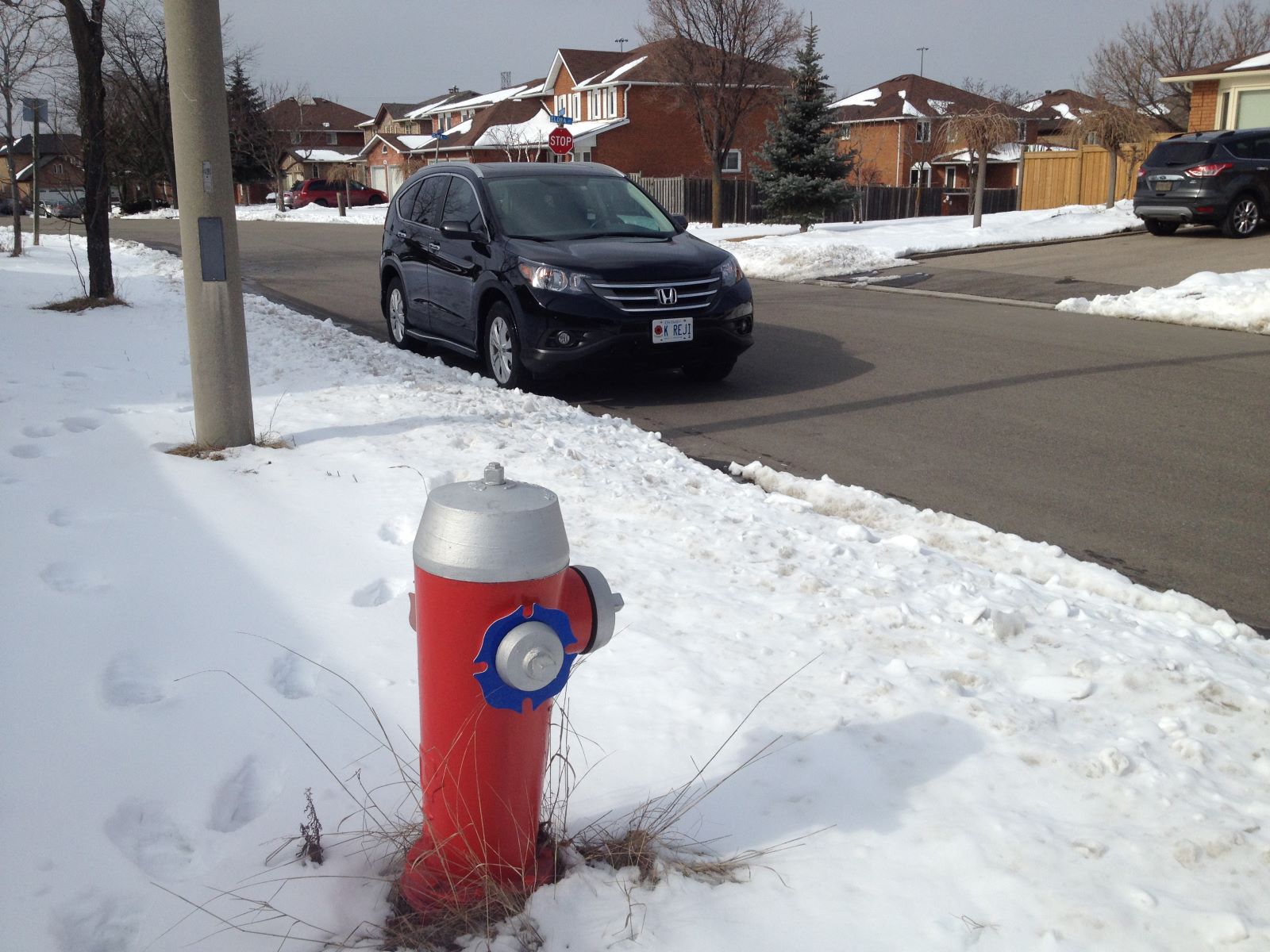Home>Automotive>The Surprising Distance You Must Keep From Fire Hydrants To Avoid Illegal Parking!


Automotive
The Surprising Distance You Must Keep From Fire Hydrants To Avoid Illegal Parking!
Published: February 11, 2024
Learn the legal distance to keep from fire hydrants to prevent illegal parking. Stay informed and avoid parking tickets with this helpful automotive guide.
(Many of the links in this article redirect to a specific reviewed product. Your purchase of these products through affiliate links helps to generate commission for Regretless.com, at no extra cost. Learn more)
Table of Contents
Introduction
Parking regulations are a crucial aspect of urban living, ensuring order and safety on bustling streets. Among the various parking rules, one of the most vital and strictly enforced regulations pertains to the distance vehicles must maintain from fire hydrants. While it may seem like a trivial concern, the significance of this rule becomes evident in emergency situations when swift access to fire hydrants can mean the difference between containing a fire and widespread devastation.
Understanding the legal requirements and potential consequences of parking near fire hydrants is essential for all drivers. It not only ensures compliance with the law but also contributes to public safety. In this article, we will delve into the surprising distance you must keep from fire hydrants to avoid illegal parking. By exploring the legal parameters, consequences, and practical tips for parking near fire hydrants, we aim to provide a comprehensive understanding of this often overlooked yet crucial aspect of parking regulations. So, fasten your seatbelts as we embark on a journey to uncover the lesser-known facts about parking near fire hydrants!
Understanding Fire Hydrant Regulations
Fire hydrants are indispensable elements of urban infrastructure, serving as vital resources for firefighters to combat blazes and protect lives and property. Consequently, regulations governing parking near fire hydrants are in place to ensure unobstructed access during emergencies. Understanding these regulations is crucial for all drivers to avoid illegal parking and contribute to public safety.
In most jurisdictions, the standard distance required between a vehicle and a fire hydrant is 15 feet. This distance is not arbitrary; it allows sufficient space for firefighting equipment to connect to the hydrant without any hindrance. It is important to note that this distance may vary depending on local ordinances, so it is essential to familiarize oneself with the specific regulations in the area where one intends to park.
The significance of adhering to fire hydrant regulations cannot be overstated. In the event of a fire, every second is critical, and unimpeded access to fire hydrants can make a substantial difference in the outcome of the emergency. Therefore, drivers must be mindful of the designated no-parking zones near fire hydrants and ensure compliance with the stipulated distance requirements.
Moreover, understanding fire hydrant regulations is not only about avoiding penalties; it is about contributing to the collective safety of the community. By respecting these regulations, drivers play a crucial role in facilitating the swift response of emergency services, potentially saving lives and property in the process.
In summary, comprehending fire hydrant regulations is essential for all drivers. It is a fundamental aspect of responsible urban living and a demonstration of respect for public safety. By upholding these regulations, drivers contribute to a safer and more efficient emergency response system, ultimately benefiting the entire community.
Legal Distance Requirements for Fire Hydrants
Parking near fire hydrants is subject to strict regulations, primarily concerning the minimum distance that vehicles must maintain from these crucial emergency resources. The legal distance requirement for fire hydrants is a critical aspect of parking regulations, as it directly impacts public safety and the effectiveness of firefighting efforts in the event of an emergency.
In most jurisdictions, the standard legal distance requirement between a vehicle and a fire hydrant is 15 feet. This distance is not arbitrary; it is carefully determined to ensure unobstructed access for firefighting personnel and equipment. The 15-foot requirement allows ample space for fire hoses to be connected to the hydrant without any hindrance from parked vehicles, enabling firefighters to swiftly access the water supply necessary to combat blazes effectively.
It is important to emphasize that the 15-foot distance requirement is a general standard and may vary in different localities. Some areas may have specific ordinances stipulating a different minimum distance from fire hydrants. Therefore, it is imperative for drivers to familiarize themselves with the exact regulations applicable in the area where they intend to park.
The legal distance requirement for fire hydrants is not a mere technicality; it is a crucial element of urban safety infrastructure. By adhering to the designated distance, drivers play a pivotal role in ensuring that fire hydrants remain readily accessible during emergencies, thereby supporting the efforts of firefighting personnel and contributing to the overall safety of the community.
In summary, the legal distance requirement for fire hydrants, typically 15 feet, is a fundamental aspect of parking regulations aimed at safeguarding public safety. By respecting and adhering to this requirement, drivers fulfill their responsibility in upholding the accessibility of fire hydrants, thereby bolstering the collective capacity to respond effectively to fire emergencies.
Consequences of Illegal Parking Near Fire Hydrants
Illegal parking near fire hydrants can have far-reaching consequences, extending beyond the immediate inconvenience caused to other road users. The strict regulations governing the designated distance between vehicles and fire hydrants exist for compelling reasons, and failing to adhere to these rules can lead to significant repercussions.
First and foremost, illegal parking near fire hydrants poses a direct threat to public safety. In the event of a fire emergency, obstructed access to fire hydrants can impede the swift response of firefighting personnel, potentially delaying crucial efforts to contain and extinguish blazes. Every second counts in such situations, and any hindrance to accessing fire hydrants due to illegal parking can have grave implications for the safety of individuals and the protection of property.
Moreover, the consequences of illegal parking near fire hydrants extend to potential legal penalties. Most jurisdictions impose substantial fines and penalties for violations related to obstructing fire hydrants. These penalties are not merely punitive measures but serve as a deterrent to ensure compliance with parking regulations that directly impact public safety. Additionally, vehicles parked illegally near fire hydrants may be subject to towing, further compounding the inconvenience and financial implications for the vehicle owner.
Beyond the immediate safety and legal ramifications, illegal parking near fire hydrants can also result in reputational damage. Drivers found to be in violation of fire hydrant parking regulations may face public scrutiny and condemnation for disregarding critical safety measures. This can tarnish their reputation as responsible members of the community and contribute to a negative perception of their regard for public safety and compliance with essential regulations.
In essence, the consequences of illegal parking near fire hydrants are multifaceted and impactful. From compromising public safety and inviting legal penalties to potential reputational damage, the repercussions of flouting fire hydrant parking regulations are significant. Therefore, it is imperative for all drivers to recognize the gravity of these consequences and prioritize compliance with the designated distance requirements from fire hydrants to uphold public safety and avoid the potential fallout of illegal parking infractions.
Tips for Parking Near Fire Hydrants
Parking near fire hydrants demands conscientiousness and adherence to legal regulations to ensure public safety and avoid potential penalties. Here are essential tips to consider when parking in proximity to fire hydrants:
-
Know the Legal Distance: Familiarize yourself with the specific legal distance requirement from fire hydrants in the area where you intend to park. While the standard distance is often 15 feet, local ordinances may stipulate variations. Understanding and adhering to the precise distance requirement is crucial to avoid illegal parking infractions.
-
Visibility and Accessibility: When parking near fire hydrants, ensure that the hydrant remains clearly visible and readily accessible to firefighting personnel. Avoid obstructing the hydrant with your vehicle or any other objects that may impede swift access during an emergency.
-
Be Mindful of Signage: Pay close attention to parking signage near fire hydrants. Many jurisdictions use specific markings or signage to indicate no-parking zones in the vicinity of fire hydrants. Respect these indications to avoid violations and contribute to unobstructed access for firefighting operations.
-
Stay Informed About Local Regulations: Stay informed about local parking regulations and any updates or changes pertaining to fire hydrant parking. Awareness of specific ordinances and enforcement practices in your area can help you navigate parking near fire hydrants with compliance and vigilance.
-
Exercise Caution and Consideration: When parking near fire hydrants, exercise caution and consideration for the potential impact on public safety. Even if you believe your parking position may not obstruct access to the hydrant, erring on the side of caution and maintaining a safe distance is essential to uphold the accessibility of fire hydrants during emergencies.
-
Plan Alternative Parking: If parking near a fire hydrant appears challenging due to limited available space or unclear regulations, consider seeking alternative parking locations. Prioritizing compliance with fire hydrant regulations and ensuring unimpeded access for firefighting operations is paramount.
By incorporating these tips into your approach to parking near fire hydrants, you contribute to the collective effort to uphold public safety and support the effectiveness of emergency response measures. Prioritizing compliance with fire hydrant regulations demonstrates a commitment to responsible urban living and a proactive stance in safeguarding the well-being of the community.
Conclusion
In conclusion, the regulations governing parking near fire hydrants are not merely technicalities but essential measures that directly impact public safety and the effectiveness of emergency response efforts. Understanding the legal distance requirements, consequences of illegal parking, and practical tips for parking near fire hydrants is paramount for all drivers. By maintaining the designated distance from fire hydrants, drivers play a critical role in upholding the accessibility of these vital resources during fire emergencies, ultimately contributing to the collective safety of the community.
The legal distance requirement, typically 15 feet, serves as a fundamental safeguard to ensure unobstructed access for firefighting personnel and equipment. By adhering to this requirement, drivers demonstrate their commitment to public safety and responsible urban living. Moreover, staying informed about local regulations and exercising caution when parking near fire hydrants are essential practices that contribute to the seamless operation of emergency response measures.
The consequences of illegal parking near fire hydrants are multifaceted, encompassing potential threats to public safety, legal penalties, and reputational damage. It is imperative for all drivers to recognize the gravity of these consequences and prioritize compliance with fire hydrant parking regulations. By doing so, drivers actively contribute to the maintenance of unimpeded access to fire hydrants, supporting the swift and effective response of firefighting personnel during emergencies.
In essence, parking near fire hydrants demands vigilance, consideration, and adherence to legal regulations. By embracing these principles, drivers not only avoid potential penalties but also play a pivotal role in upholding public safety and the efficiency of emergency response measures. As responsible members of the community, drivers hold the collective responsibility to ensure that fire hydrants remain accessible and unobstructed, thereby fortifying the overall capacity to respond effectively to fire emergencies.
In the grand scheme of urban safety and responsible citizenship, the surprising distance required to avoid illegal parking near fire hydrants is a small yet significant contribution to the well-being of the community. By respecting and upholding fire hydrant regulations, drivers actively participate in fostering a safer and more resilient urban environment, where public safety remains a paramount priority.














